James Davis
Guideline-Consistent Segmentation via Multi-Agent Refinement
Sep 04, 2025Abstract:Semantic segmentation in real-world applications often requires not only accurate masks but also strict adherence to textual labeling guidelines. These guidelines are typically complex and long, and both human and automated labeling often fail to follow them faithfully. Traditional approaches depend on expensive task-specific retraining that must be repeated as the guidelines evolve. Although recent open-vocabulary segmentation methods excel with simple prompts, they often fail when confronted with sets of paragraph-length guidelines that specify intricate segmentation rules. To address this, we introduce a multi-agent, training-free framework that coordinates general-purpose vision-language models within an iterative Worker-Supervisor refinement architecture. The Worker performs the segmentation, the Supervisor critiques it against the retrieved guidelines, and a lightweight reinforcement learning stop policy decides when to terminate the loop, ensuring guideline-consistent masks while balancing resource use. Evaluated on the Waymo and ReasonSeg datasets, our method notably outperforms state-of-the-art baselines, demonstrating strong generalization and instruction adherence.
GenIR: Generative Visual Feedback for Mental Image Retrieval
Jun 06, 2025Abstract:Vision-language models (VLMs) have shown strong performance on text-to-image retrieval benchmarks. However, bridging this success to real-world applications remains a challenge. In practice, human search behavior is rarely a one-shot action. Instead, it is often a multi-round process guided by clues in mind, that is, a mental image ranging from vague recollections to vivid mental representations of the target image. Motivated by this gap, we study the task of Mental Image Retrieval (MIR), which targets the realistic yet underexplored setting where users refine their search for a mentally envisioned image through multi-round interactions with an image search engine. Central to successful interactive retrieval is the capability of machines to provide users with clear, actionable feedback; however, existing methods rely on indirect or abstract verbal feedback, which can be ambiguous, misleading, or ineffective for users to refine the query. To overcome this, we propose GenIR, a generative multi-round retrieval paradigm leveraging diffusion-based image generation to explicitly reify the AI system's understanding at each round. These synthetic visual representations provide clear, interpretable feedback, enabling users to refine their queries intuitively and effectively. We further introduce a fully automated pipeline to generate a high-quality multi-round MIR dataset. Experimental results demonstrate that GenIR significantly outperforms existing interactive methods in the MIR scenario. This work establishes a new task with a dataset and an effective generative retrieval method, providing a foundation for future research in this direction.
J-CaPA : Joint Channel and Pyramid Attention Improves Medical Image Segmentation
Nov 25, 2024Abstract:Medical image segmentation is crucial for diagnosis and treatment planning. Traditional CNN-based models, like U-Net, have shown promising results but struggle to capture long-range dependencies and global context. To address these limitations, we propose a transformer-based architecture that jointly applies Channel Attention and Pyramid Attention mechanisms to improve multi-scale feature extraction and enhance segmentation performance for medical images. Increasing model complexity requires more training data, and we further improve model generalization with CutMix data augmentation. Our approach is evaluated on the Synapse multi-organ segmentation dataset, achieving a 6.9% improvement in Mean Dice score and a 39.9% improvement in Hausdorff Distance (HD95) over an implementation without our enhancements. Our proposed model demonstrates improved segmentation accuracy for complex anatomical structures, outperforming existing state-of-the-art methods.
Automatic Dataset Construction (ADC): Sample Collection, Data Curation, and Beyond
Aug 21, 2024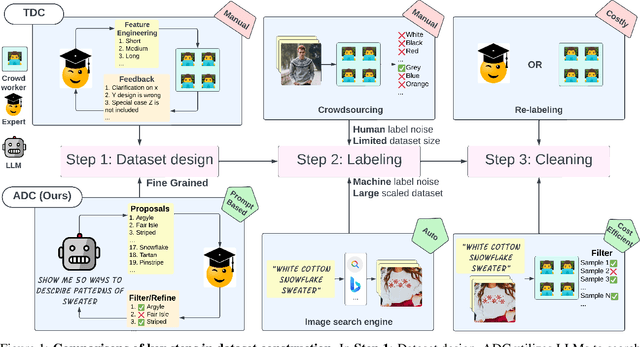
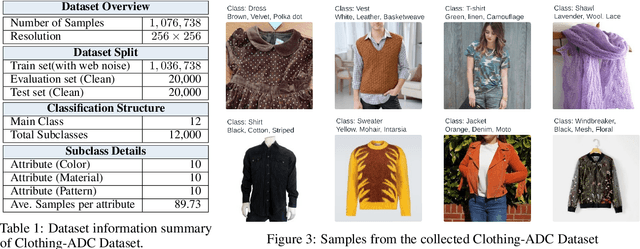

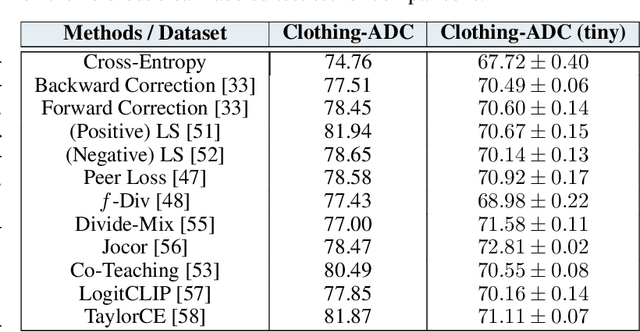
Abstract:Large-scale data collection is essential for developing personalized training data, mitigating the shortage of training data, and fine-tuning specialized models. However, creating high-quality datasets quickly and accurately remains a challenge due to annotation errors, the substantial time and costs associated with human labor. To address these issues, we propose Automatic Dataset Construction (ADC), an innovative methodology that automates dataset creation with negligible cost and high efficiency. Taking the image classification task as a starting point, ADC leverages LLMs for the detailed class design and code generation to collect relevant samples via search engines, significantly reducing the need for manual annotation and speeding up the data generation process. Despite these advantages, ADC also encounters real-world challenges such as label errors (label noise) and imbalanced data distributions (label bias). We provide open-source software that incorporates existing methods for label error detection, robust learning under noisy and biased data, ensuring a higher-quality training data and more robust model training procedure. Furthermore, we design three benchmark datasets focused on label noise detection, label noise learning, and class-imbalanced learning. These datasets are vital because there are few existing datasets specifically for label noise detection, despite its importance. Finally, we evaluate the performance of existing popular methods on these datasets, thereby facilitating further research in the field.
Reducing Vision Transformer Latency on Edge Devices via GPU Tail Effect and Training-free Token Pruning
Jul 01, 2024Abstract:This paper investigates how to efficiently deploy transformer-based neural networks on edge devices. Recent methods reduce the latency of transformer neural networks by removing or merging tokens, with small accuracy degradation. However, these methods are not designed with edge device deployment in mind, and do not leverage information about the hardware characteristics to improve efficiency. First, we show that the relationship between latency and workload size is governed by the GPU tail-effect. This relationship is used to create a token pruning schedule tailored for a pre-trained model and device pair. Second, we demonstrate a training-free token pruning method utilizing this relationship. This method achieves accuracy-latency trade-offs in a hardware aware manner. We show that for single batch inference, other methods may actually increase latency by 18.6-30.3% with respect to baseline, while we can reduce it by 9%. For similar latency (within 5.2%) across devices we achieve 78.6%-84.5% ImageNet1K accuracy, while the state-of-the-art, Token Merging, achieves 45.8%-85.4%.
VortexViz: Finding Vortex Boundaries by Learning from Particle Trajectories
Apr 01, 2024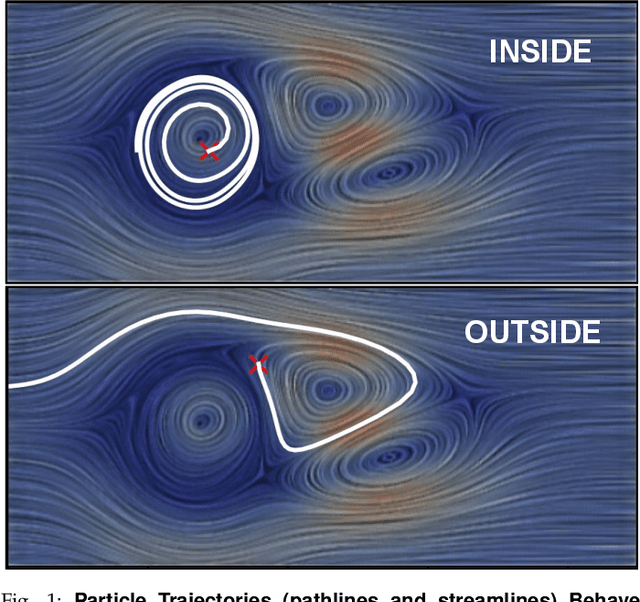
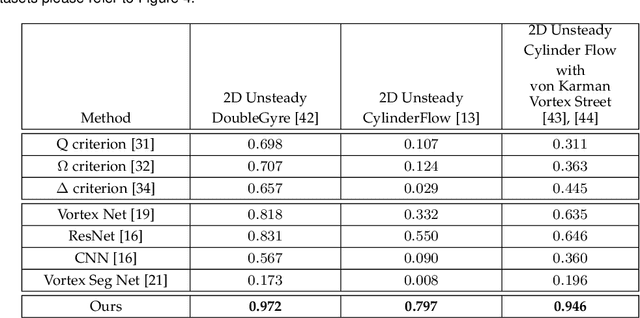
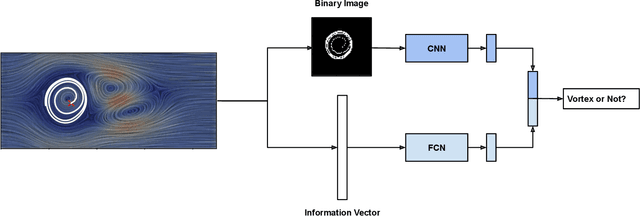
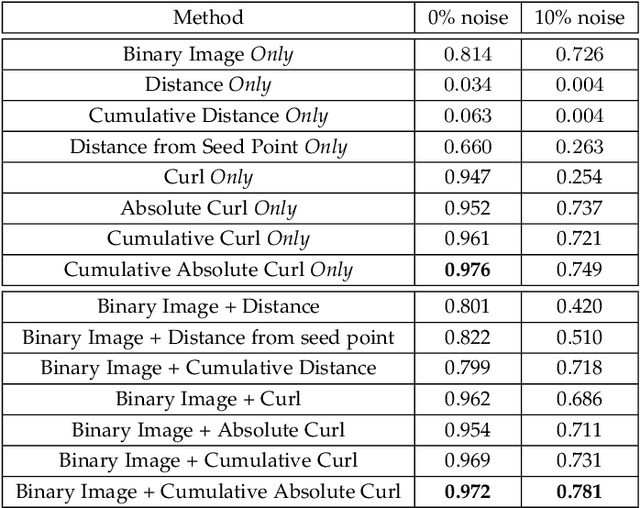
Abstract:Vortices are studied in various scientific disciplines, offering insights into fluid flow behavior. Visualizing the boundary of vortices is crucial for understanding flow phenomena and detecting flow irregularities. This paper addresses the challenge of accurately extracting vortex boundaries using deep learning techniques. While existing methods primarily train on velocity components, we propose a novel approach incorporating particle trajectories (streamlines or pathlines) into the learning process. By leveraging the regional/local characteristics of the flow field captured by streamlines or pathlines, our methodology aims to enhance the accuracy of vortex boundary extraction.
SplatFace: Gaussian Splat Face Reconstruction Leveraging an Optimizable Surface
Mar 29, 2024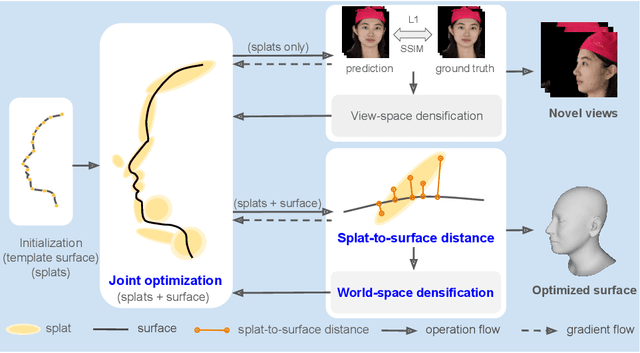
Abstract:We present SplatFace, a novel Gaussian splatting framework designed for 3D human face reconstruction without reliance on accurate pre-determined geometry. Our method is designed to simultaneously deliver both high-quality novel view rendering and accurate 3D mesh reconstructions. We incorporate a generic 3D Morphable Model (3DMM) to provide a surface geometric structure, making it possible to reconstruct faces with a limited set of input images. We introduce a joint optimization strategy that refines both the Gaussians and the morphable surface through a synergistic non-rigid alignment process. A novel distance metric, splat-to-surface, is proposed to improve alignment by considering both the Gaussian position and covariance. The surface information is also utilized to incorporate a world-space densification process, resulting in superior reconstruction quality. Our experimental analysis demonstrates that the proposed method is competitive with both other Gaussian splatting techniques in novel view synthesis and other 3D reconstruction methods in producing 3D face meshes with high geometric precision.
A Survey on Human-AI Teaming with Large Pre-Trained Models
Mar 07, 2024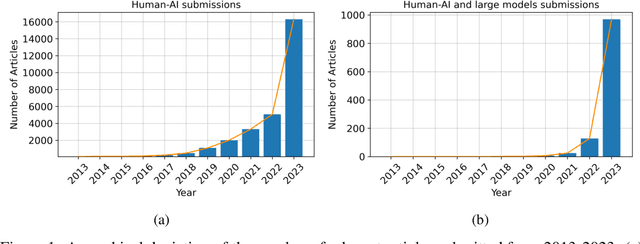
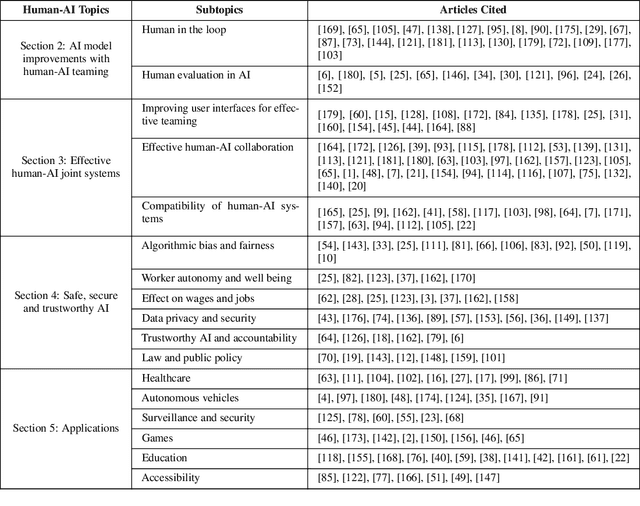
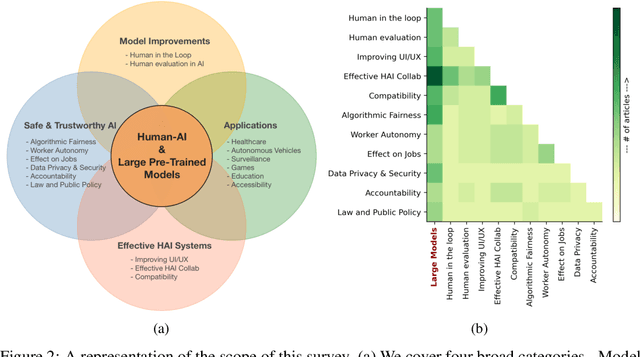
Abstract:In the rapidly evolving landscape of artificial intelligence (AI), the collaboration between human intelligence and AI systems, known as Human-AI (HAI) Teaming, has emerged as a cornerstone for advancing problem-solving and decision-making processes. The advent of Large Pre-trained Models (LPtM) has significantly transformed this landscape, offering unprecedented capabilities by leveraging vast amounts of data to understand and predict complex patterns. This paper surveys the pivotal integration of LPtMs with HAI, emphasizing how these models enhance collaborative intelligence beyond traditional approaches. It examines the synergistic potential of LPtMs in augmenting human capabilities, discussing this collaboration for AI model improvements, effective teaming, ethical considerations, and their broad applied implications in various sectors. Through this exploration, the study sheds light on the transformative impact of LPtM-enhanced HAI Teaming, providing insights for future research, policy development, and strategic implementations aimed at harnessing the full potential of this collaboration for research and societal benefit.
Assessing the Impact of Prompting, Persona, and Chain of Thought Methods on ChatGPT's Arithmetic Capabilities
Dec 22, 2023



Abstract:This study critically evaluates the mathematical proficiency of OpenAI's language model, ChatGPT, by juxtaposing its default computational capabilities against the efficiency of three prescriptive methods: strategic prompting, persona implementation, and the Chain of Thought approach. The evaluation harnessed the diverse and extensive problem sets from the MATH, GSM8K, and MMLU data-sets, which encompassing a broad spectrum of mathematical conundrums and levels of complexity. A sophisticated grading script was designed to determine the efficacy of these interventions in enhancing the model's mathematical precision. Contrary to expectations, our empirical analysis revealed that none of the trialed methods substantially improved ChatGPT's baseline performance. In some cases, these interventions inadvertently disrupted the model's response generation. This investigation concluded that while the pursuit of innovative strategies for augmenting language model performance remains crucial, the specific methods examined within this study did not induce significant improvements in ChatGPT's computational aptitude. These findings underscore the importance of further comprehensive research and exploration of novel techniques to enhance the precision and dependability of such models across diverse domains.
Disjoint Pose and Shape for 3D Face Reconstruction
Aug 26, 2023



Abstract:Existing methods for 3D face reconstruction from a few casually captured images employ deep learning based models along with a 3D Morphable Model(3DMM) as face geometry prior. Structure From Motion(SFM), followed by Multi-View Stereo (MVS), on the other hand, uses dozens of high-resolution images to reconstruct accurate 3D faces.However, it produces noisy and stretched-out results with only two views available. In this paper, taking inspiration from both these methods, we propose an end-to-end pipeline that disjointly solves for pose and shape to make the optimization stable and accurate. We use a face shape prior to estimate face pose and use stereo matching followed by a 3DMM to solve for the shape. The proposed method achieves end-to-end topological consistency, enables iterative face pose refinement procedure, and show remarkable improvement on both quantitative and qualitative results over existing state-of-the-art methods.
 Add to Chrome
Add to Chrome Add to Firefox
Add to Firefox Add to Edge
Add to Edge